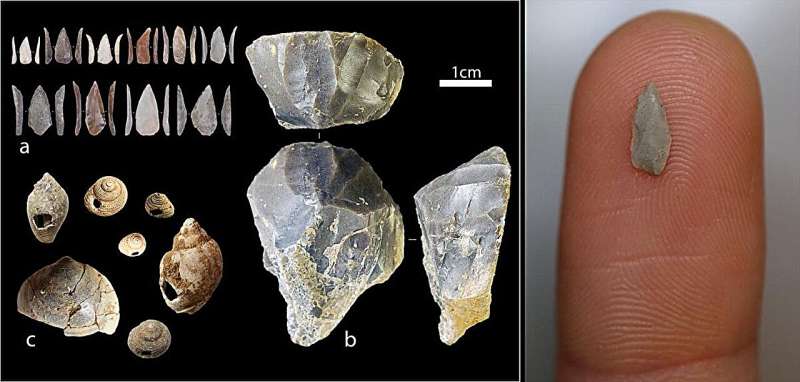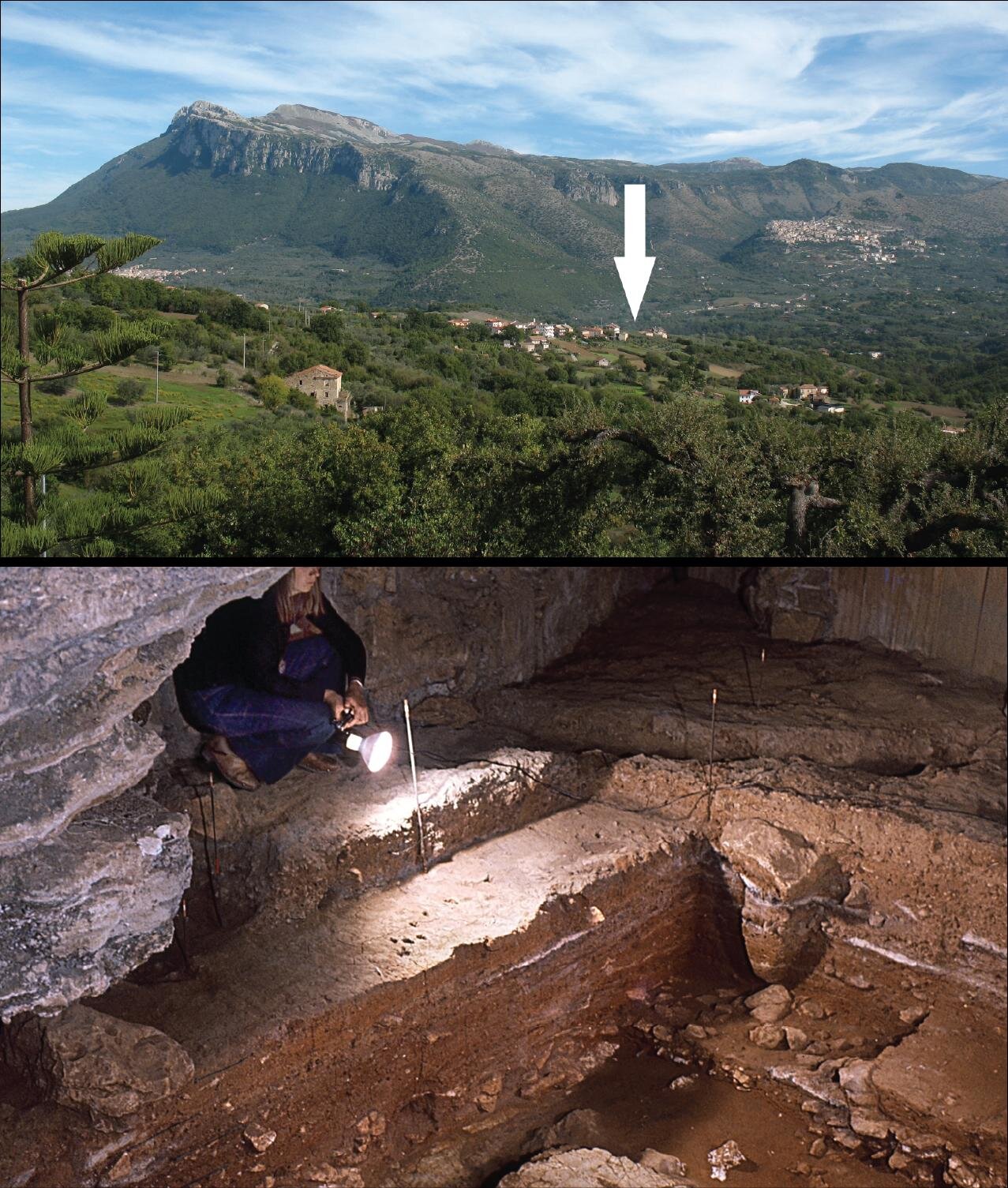Grotta di Castelcivita. Above: The location of the cave (indicated by a white arrow) at the foot of the Alburni massif in the Campania region, southern Italy. Below: The excavation trench of the Upper Paleolithic layers. Credit: University of Tübingen
An international team of researchers from the universities of Tübingen (Dr. Armando Falcucci), Siena and Bologna analyzed the cultural remains left by groups of early Homo sapiens in Grotta di Castelcivita in southern Italy. These remains date from before the major eruption known as the Campanian Ignimbrite.
This explosive event, which originated about 40,000 years ago in the still active Phlegraean Fields, is considered the most powerful volcanic eruption ever recorded in the Mediterranean. Grotta di Castelcivita is one of the rare archaeological sites where volcanic ash has sealed a high-resolution archaeological sequence.
By using a range of advanced methodologies to accurately reconstruct the methods used to make stone tools – the most durable artefacts unearthed in prehistoric excavations – the researchers have shown that cultural development at Castelcivita preceded both the deposition of the volcanic strata and the sub-contemporaneous cold climate phase known as Heinrich Stadial 4, which lasted for approximately 2 millennia.

Examples of remains of material culture discovered in the upper layers of Grotta di Castelcivita, before the definitive closure of the archaeological sequence by the volcanic eruption. The micropoints (a) were extracted from cores (b) bearing the negatives of these removals. In addition to stone tools, more than a hundred sea shells of various types were collected from the Mediterranean coasts and perforated for decorative purposes (c). On the right, one of the micropoints is depicted on the tip of a finger. Credit: University of Tübingen
The most remarkable cultural innovation recorded at the site is the production of miniaturized stone points from rocks collected near the cave with the most suitable fracture properties. These micro-tools were probably intended to be attached to multi-component projectile weapons.
This discovery refutes long-held speculation that natural disasters, such as volcanic eruptions and cooling, were major causes of major changes in the lifestyle of hunter-gatherers in prehistoric humans.
The study, published in Scientific reportsinstead assumes that cultural innovations among early Homo sapiens arose from mechanisms of cultural transmission and the establishment of large-scale networks that extended beyond the Alps.
Overall, this research represents an important step in understanding how Upper Paleolithic hunter-gatherer communities developed advanced strategies to thrive in changing environments.
Grotta di Castelcivita is one of the most important prehistoric deposits in Europe. It contains a high-resolution stratigraphic sequence that provides evidence for the replacement of Neanderthals by early Homo sapiens groups, about 43,000 years ago.
The excavations and research at this site are being carried out with the permission of the Italian Ministry of Culture by the Prehistory and Anthropology Research Unit of the Department of Natural Sciences, Earth and Environment of the University of Siena, directed by Adriana Moroni.
More information:
Armando Falcucci et al, A pre-Campanian Ignimbrite techno-cultural shift in the Aurignacian sequence of Grotta di Castelcivita, southern Italy, Scientific reports (2024). DOI file: 10.1038/s41598-024-59896-6
Offered by the University of Tübingen
Quote: Ancient volcanic eruption not a catalyst for early cultural innovations of Homo sapiens, researchers say (2024, July 5) Retrieved July 6, 2024, from https://phys.org/news/2024-07-ancient-volcanic-eruption-catalyst-early.html
This document is subject to copyright. Except for fair dealing for private study or research, no part may be reproduced without written permission. The contents are supplied for information purposes only.
